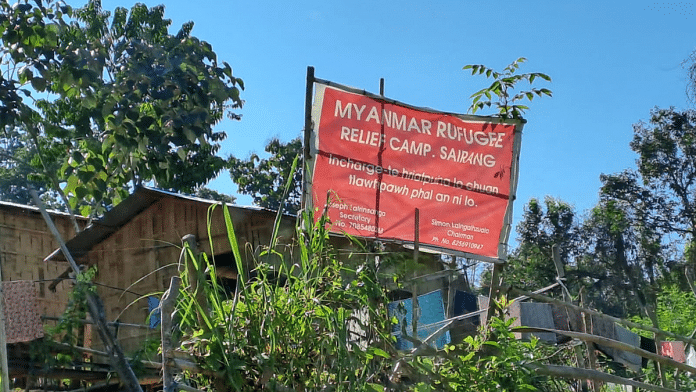A shiver up the spine.
That’s what 30,000 or so Myanmar refugees sheltering in Mizoram in Northeast India felt when they heard of the air strike in Kachin State back in their own country on 23 October. At last count, 80 people were reportedly killed in the air strike conducted on a concert on the orders of Myanmar’s military junta, which said it was “necessary action” against “terrorist” acts.
In October, Mizoram officially confirmed that 30,394 refugees from Myanmar have entered the state ever since the junta overthrew the Aung San Suu Kyi government on 1 February 2021. Non-government estimates put the number of refugees between 45,000 and 65,000. Mizoram home minister Pu Lalchamliana describes the number as “fluid”.
Kachin State is 545 km from Mizoram as the crow flies. But for the refugees living in Mizoram, the fear of more such airstrikes is real. The Kachin attack has dashed their hopes of going home any time soon and fanned worries about overstaying their welcome in India.
Inside the refugee camps
Mostly ethnic Chins from western Myanmar, the refugees had anyway arrived to a mixed welcome: A warm one from Mizoram, which share ethnicity, language, and religion with them, and a chilly one from New Delhi, which has diplomatic ties with the Myanmar junta and no refugee policy and has said that all refugees are to be pushed back. That has meant no allocation of central funds to Mizoram to deal with refugees. Churches and NGOs, the mainstay of refugee relief, are stressed for funds too and worried about economic tensions triggering incidents of refugee-Mizo friction.
That is the last thing 18-year-old Dona Lian wants – friction with local people. She is put up at the Sairang refugee camp, about 25 km from Aizawl, and just about to find her feet a whole year after she fled her home in Hakha town in Myanmar’s Chin State bordering India. She recently started going to Class IX at a local school. She was in Class XII in Myanmar. Lalchamliana has told this journalist that refugee children are allowed to go to local schools and colleges.
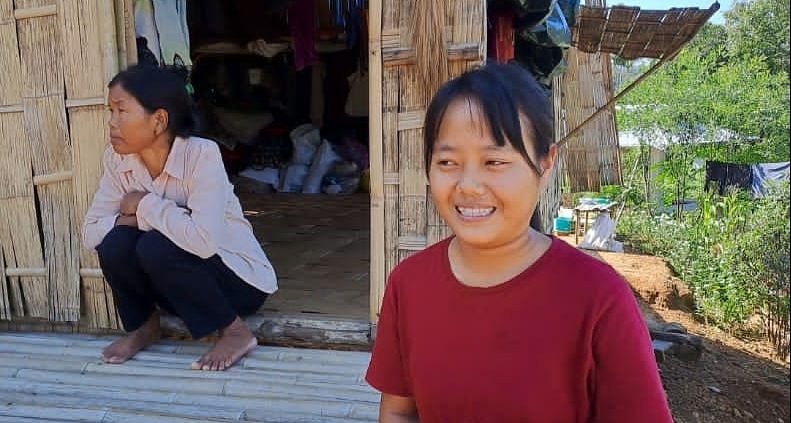
Dona, her parents, and six siblings had to flee their hometown in the dead of night last November after soldiers came looking for Myanmar’s Civil Disobedience Movement (CDM) activists, comprising mostly civil servants opposed to the junta.
Dona Lian’s parents were CDM activists too.
“We could hear bomb blasts and gunfire for several nights in the distance. But when the military came to town and started house-to-house searches for CDM members and some of our neighbours got hurt, my father said we must leave,” says Dona.
They left one night riding pillion on scooters driven by members of the People’s Defence Force (PDF), the armed wing of the National Unity Government (NUG) that is recognised by the European Parliament as a Myanmar government-in-exile but labelled a terrorist outfit by the Myanmar junta. The PDF is also fighting the military.
“We had to leave also because my mother was about to have a baby. It took us three days to enter India. We were lucky. Many people take 2-3 weeks to come over,” Dona adds.
Her mother delivered a baby girl soon after arriving in India. The infant has become the darling of the Sairang camp, which consists of 8 to10 thatched huts in a wooded area off the road between Aizawl and the Lengpui Airport. An earthen road links it to the local village a kilometre away. Black plastic water tanks are stacked near the huts, replenished daily by the local village committee. Food and healthcare are basic for the 40-odd inmates.
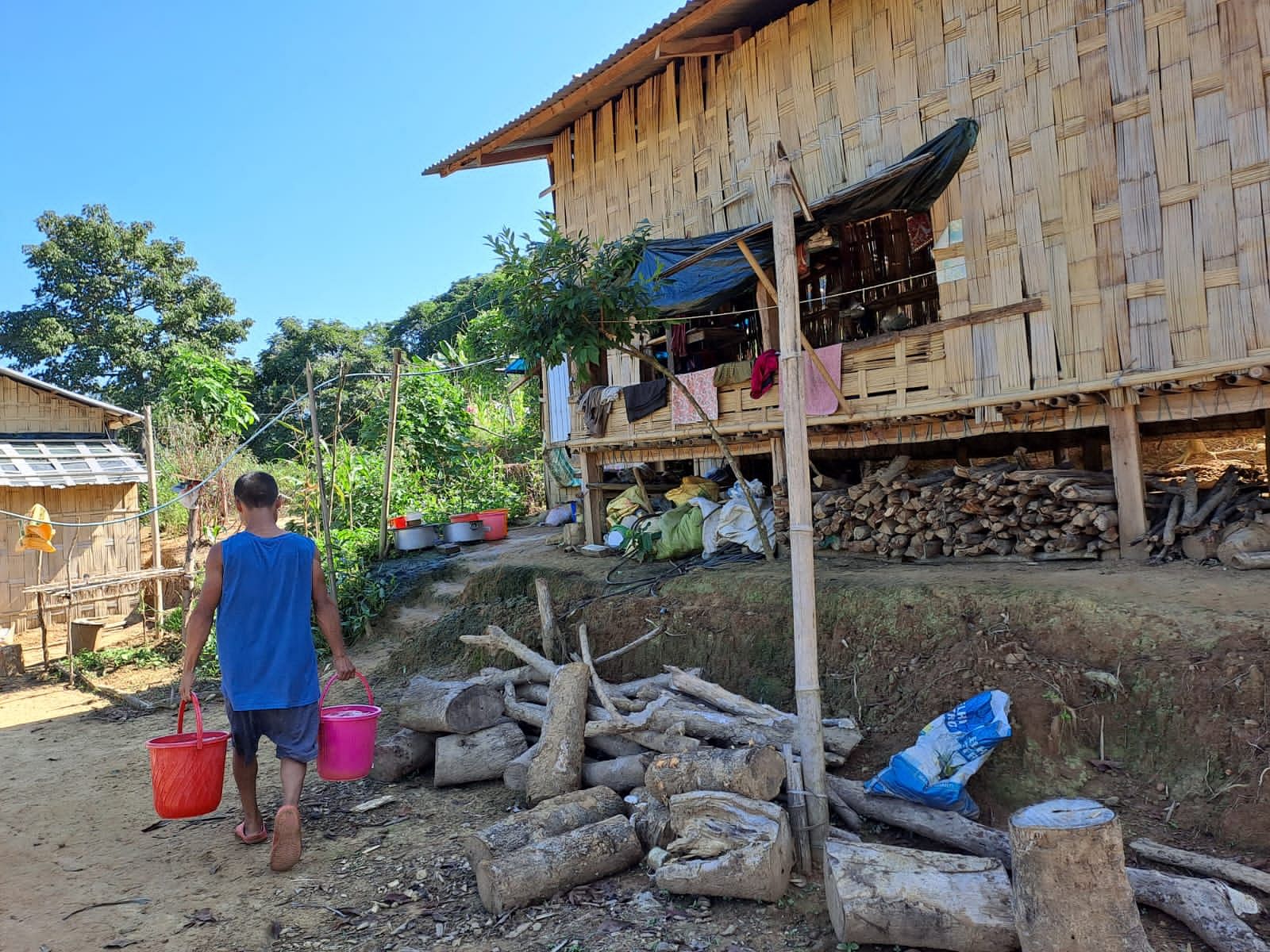
Dona’s father and the other men of the refugee community were away when I visited, gone looking for construction work or any other labour to earn meagre amounts — Rs 500 per day.
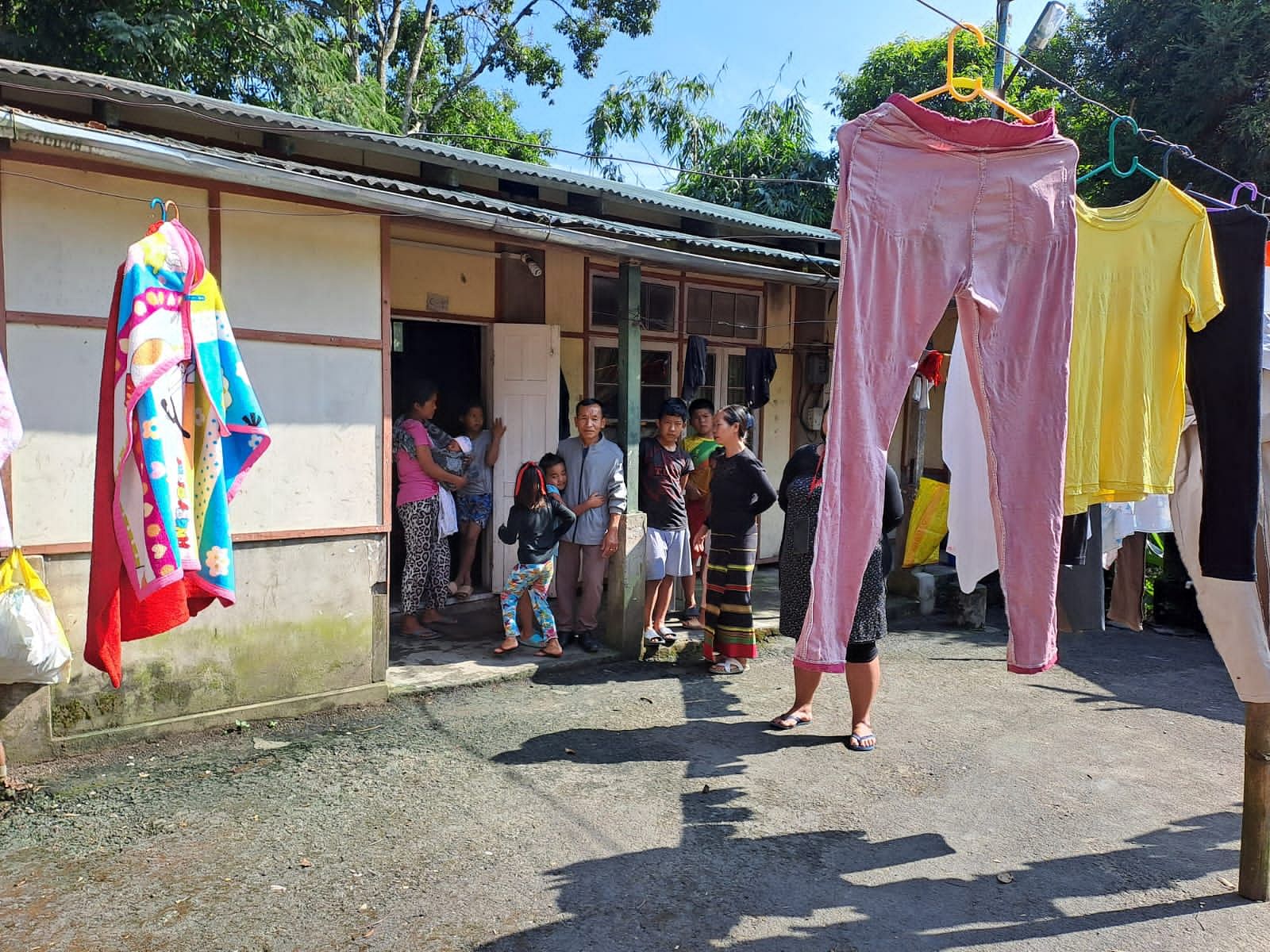
Dona was lucky to escape with her entire family. Not so Pu Aung Thang and his wife Pi Malsawmi, a refugee couple in charge of the Siphir refugee camp in a Revivalist Church compound in north Aizawl. They left their home in Chin State with only three of their four children. Their oldest, a 24-year-old son, stayed back in hometown Matupui. He is a ‘CDM sepoy’. He has stayed back to fight the junta.
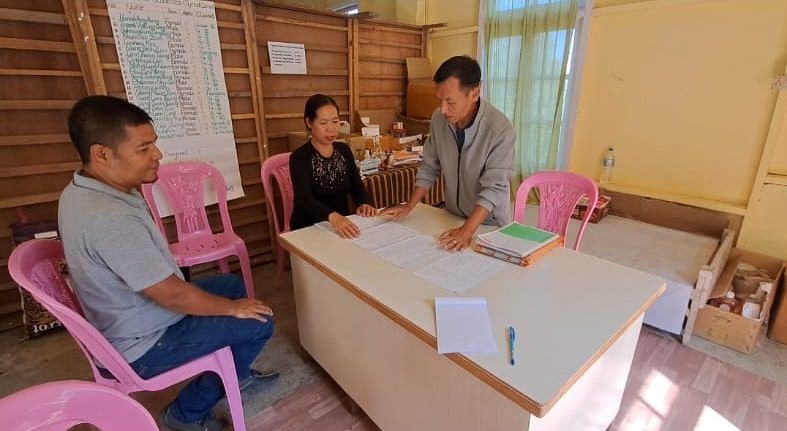
“We didn’t want to leave our son behind. But someone has to fight the battle,” says Pi Malswami, the CDM sepoy’s 49-year-old mother. Her husband, Pu Aung Thang, was a local leader of the National League for Democracy (NLD), which is Suu Kyi’s party. Had they stayed on, the 59-year-old may have been arrested, even killed. “So, I came away for my safety,” says the father. “We are scared for him (the eldest son) all the time.”
Also read: India is ignoring the escalating war in Myanmar that could reignite conflicts in Northeast
What Suu Kyi’s MPs, MLAs say
Also fighting the junta, though only in spirit, are the 29 MLAs and MPs of the NLD, who are also sheltering in Mizoram. After the coup, they were told to submit in writing to the local police stations that they would no longer participate in any political activity. They said they would but did not and fled to Mizoram.
The MPs I met did not want their locations disclosed and spoke on condition of anonymity.
“Our friends and family will face consequences back in Myanmar if you reveal our names,” says one woman MP whose family is friends with Suu Kyi’s.
“We also don’t want to draw your central government’s attention,” says another, adding, “The Mizoram chief minister and people are doing a lot. But Delhi’s policy is not clear.”
References to India’s policy on Myanmar are guarded but laced with impatience. India expressed “grave concern” after the February 2021 coup and a statement by the Ministry of External Affairs said: “India has always been steadfast in its support to the process of democratic transition in Myanmar. We believe that the rule of law and the democratic process must be upheld”.
More recently, External Affairs Minister S. Jaishankar said in Thailand that it is natural for India to support democratic aspiration of the people. “To hear we are falling short, I think that is a little difficult to swallow. Our position is clear, but we have to manage our border relationship, compulsions of being a neighbour,” he was quoted saying.
But a third Myanmar MP, who joined the ongoing conversation, is champing at the bit. “We need three things,” he says, “Inside Myanmar, solidarity among ethnic groups, outside Myanmar, political support of other countries like India, and lastly, weapons to fight the junta. Hardening his tone a little, he adds, “We need India to stop supplying the junta with fuel and arms.”
Hastily, a fourth MP pipes up to deflect acrimony. “I believe the Indian government is doing double-handed diplomacy,” he says. “It is in touch with the junta because of India’s own compulsions, but confidentially, I think India is also maintaining links with the National Unity Government.”
Whether that is in fact so is not officially known.
The Myanmar MPs want to meet members of the Indian government, but with no proper documents or visa, they are unable to travel to Delhi. They did meet vice-president Venkaiah Naidu when he visited Aizawl in March. The MPs pleaded for help to restore democracy in Myanmar. It is not clear yet if they will be able to meet President Droupadi Murmu who is visiting Mizoram last week.
Seeking Centre’s help to no avail
Saddled with the refugees and budgetary constraints, chief minister Zoramthanga has been seeking the Centre’s help repeatedly, even meeting Prime Minister Narendra Modi in New Delhi in October. But no funds have come in recent months.
Immediately after the February coup, the Ministry of Home Affairs (MHA) instructed the Mizoram government to ensure pushback of all refugees. But Zoramthanga refused to do so. Mizos and Myanmar’s Chins are people of the same ethnic stock, speak a similar language and follow the same religion — Christianity. Intermarriage is common and families across the border are related.
“Zoramthanga told the Centre they are our brothers and sisters, our blood. In their suffering, we must help them. I will not push them back whatever may be the outcome,” Lalchamliana told this journalist at his office at New Capital Complex.
Mizoram appears to have paid a price for that with no funds for refugee relief.
“Under Covid’s impact, the state govt is in a very difficult financial situation. We can’t do much. We gave Rs 30 lakh, then Rs 50 lakh, and then Rs 3 crore for refugee relief. Rs 80 lakh is from the state. I don’t know where the Rs 3 crore came from. Certainly not the state budget. Possibly the Centre,” he said.
But such dribs and drabs won’t do any longer, says the Young Mizo Association (CYMA), a politically powerful NGO that is helming refugee relief with several church denominations.
“Whether the Centre sent it officially or unofficially, Rs 3 crore is just not enough,” says YMA general secretary Lalnuntluanga. Ever since the influx began, CYMA has spent Rs 3 crore on refugee relief in cash and kind. It collected Rs 85 lakh in cash as donations, the rest came as in-kind contributions from churches and other NGOs.
Low funds mean hard times for the refugees and CYMA vice president Lalhmachhuana is worried about consequences.
“The refugees came empty-handed into our country. We have to help them. But since there is no money, they are now trying to find work as labour, drug supply into Mizoram has increased and economic conflicts between refugees and local residents are starting. The Centre must step in,” he says.
There seems to be no sign of that. Ever since Jaishankar made the February 2021 statement, much water has flown under the bridge.
Wait and watch, but closely
Much water has flown under the bridge. While India is maintaining a hands-off wait-and-watch policy, the Association of South East Asian Nations (ASEAN) has engaged with Myanmar. It did not make much headway in the past but sat up and took serious note of the Kachin State airstrike and held an emergency meeting on 27 October in Jakarta. Myanmar, which is an ASEAN member, was not invited to the meeting and took offence. But ASEAN is meeting again on 11 November to find a solution to the problem.
The outcome of this meeting will be closely watched by India. Jaishankar has had to field questions about India’s relationship with the junta. He defended India’s bilateral relationship with Myanmar saying that it is New Delhi’s “immediate neighbour” and that its understanding and interests “are very different from people who are far away”.
So far, Mizoram has been a good neighbour to refugees from Myanmar. But for how much longer? The question is looming large — for both Mizoram and the refugees. Some of the latter are beginning to give up hope of ever going back home and trying instead to get out of Mizoram and head to mainland India.
One refugee, a farmer from Matupui, now living at a camp near Aizawl, says that life has a way of going on. His son recently got married to a Burmese girl living in the same refugee camp. He left for Delhi to find a job and found one too as a tailor. Once he settles down, he will take his wife there. Perhaps his parents later, the father says.
There is a wistfulness in his voice that you will only hear coming from refugees – someone unable to go home from an alien land and unable to put down roots in it.
Monideepa Banerjie is a senior journalist based in Kolkata.
(Edited by Humra Laeeq)


